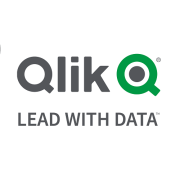
What feedback do healthcare professionals give about the data visualization tools that they use?
Are there specific industry-related issues that drive these users to invest in data visualization?
In this article, enterprise tech professionals from the healthcare industry discuss both the added value that they’ve found in Tableau and Qlik Sense, and share which of their pain points still need addressing.
Keep reading to hear the most useful input from our user community.
Tableau
A PaaS for Data Visualization
Steve Cornett, a Solution Architect at a healthcare company with 1,001-5,000 employees, explains that “Tableau is used in our Platform-as-a-Service offering for data visualization/exploration, seeking to retire a larger BI platform using it.”
In terms of the added value provided to his organization, Cornett explains that Tableau’s ease of use and polished visualizations, as well as its discrete data elements, storytelling, and self-service feature(s) collectively allow for excellent, visual “data exploration with unknown questions.”
An Industry Analyst at a healthcare company with 1,001-5,000 employees states that “The speed with which it is possible to explore data is, for me, the best thing about Tableau.”
This user elaborates that “it is extremely easy to drill into data, which in turn shortens the time from having raw data to having useful, actionable insights.
The aesthetics of the dashboards and adherence to data visualization best practices by default is also great.”
Employee Workflow Monitoring
This industry analyst also shares that “Our organization’s workflows dictate that the front desk staff is supposed to collect demographic data from our customers.
However, we knew that this was not happening. Tableau allowed us to very easily monitor which staff members were adhering to these workflows and which weren't. We could then do very targeted re-training of those staff members who needed it.”
Qlik Sense
Data Engineering and Analytics
Eric Johnson, Director of Supply Chain Service Operations at a healthcare company with 1,001-5,000 employees, shares:
“Qlik has, simply but strongly put, removed a significant amount of our time spent engineering data and given that time back to our team to analyze and draw insights that drive decisions and outcomes for our company and for the healthcare industry.”
Which Software Did Healthcare Professionals Consider Prior to their Current Tool?
Tableau Users
Considered MicroStrategy 9.4 Visual Insight
Cornett shares that “For our PaaS data discovery needs at the time, we reviewed MicroStrategy 9.4 Visual Insight, which was not up to the capabilities/ease of use that Tableau had at the time.”
Tested QlikView Desktop and Yellowfin Analytics
“In late 2013, we tested QlikView Desktop and Yellowfin Analytics”, shares this industry analyst.
He then explains that “They did not seem quite as powerful at the time. However, I have not evaluated those products since.
In early 2016, I explored Microsoft Power BI and found the interface clunky compared to Tableau. It is, however, much cheaper.”
Qlik Sense Users
Previously Used SQL and Microsoft Office
Johnson shares what his organization's’ data reporting practices were before they began using Qlik Sense:
“Prior to Qlik, our data modeling and reporting process consisted of SQL -> MS Access -> MS Excel -> MS PowerPoint; when requests or report criteria would change, that vicious cycle would be repeated and sometimes it was painfully labor-intensive.
Qlik optimized the data engineering aspect and packaged that entire process into one place.”
What Do Healthcare Professionals Advise Potential Users?
“Pick the right tool for the job/consumers of the products”, suggests Cornett, adding that “There is not a single product that can cover all personas/use cases well or there would be only one product out there commanding the world – and there’s simply not just one.”
Johnson describes the ROI that Qlik Sense brought to his healthcare company:
“Qlik output operates at the capacity of multiple FTEs. The "faster" time to analyses and insights and the single source of truth nature of that output has led to better business decisions and faster revenue recognition.”
A Senior Business Intelligence Manager at a pharma/biotech company advises potential users regarding the cost and licensing of tools they are considering:
“Depending on the company size, of course, an enterprise license model makes sense.
Prices from Qlik are in general high; however, there are more and more other vendors who offer the same support. Nonetheless, I recommend checking experience level beforehand, as not all Qlik-certified partners have the same level of quality, in my opinion.”
Read more data visualization reviews by enterprise tech professionals at IT Central Station.





Tableau hands down. The bulk of analysts in HC are not data scientists nor IT types. They are indeed the under-served business user. I have been at this for 8 years and have written a 150 page document for a F-1000 corporation comparing Qlik-Tek and Tableau. The points and questions were segmented into business user types and IT types. Tableau was the overall winner
Undoubtedly Tableau capture the major part of this market but dashboard offerings from us will allow you to think over this again and i can change your experience and view with in 20 minutes demo of my product
In Belgium it will be QlikSence.